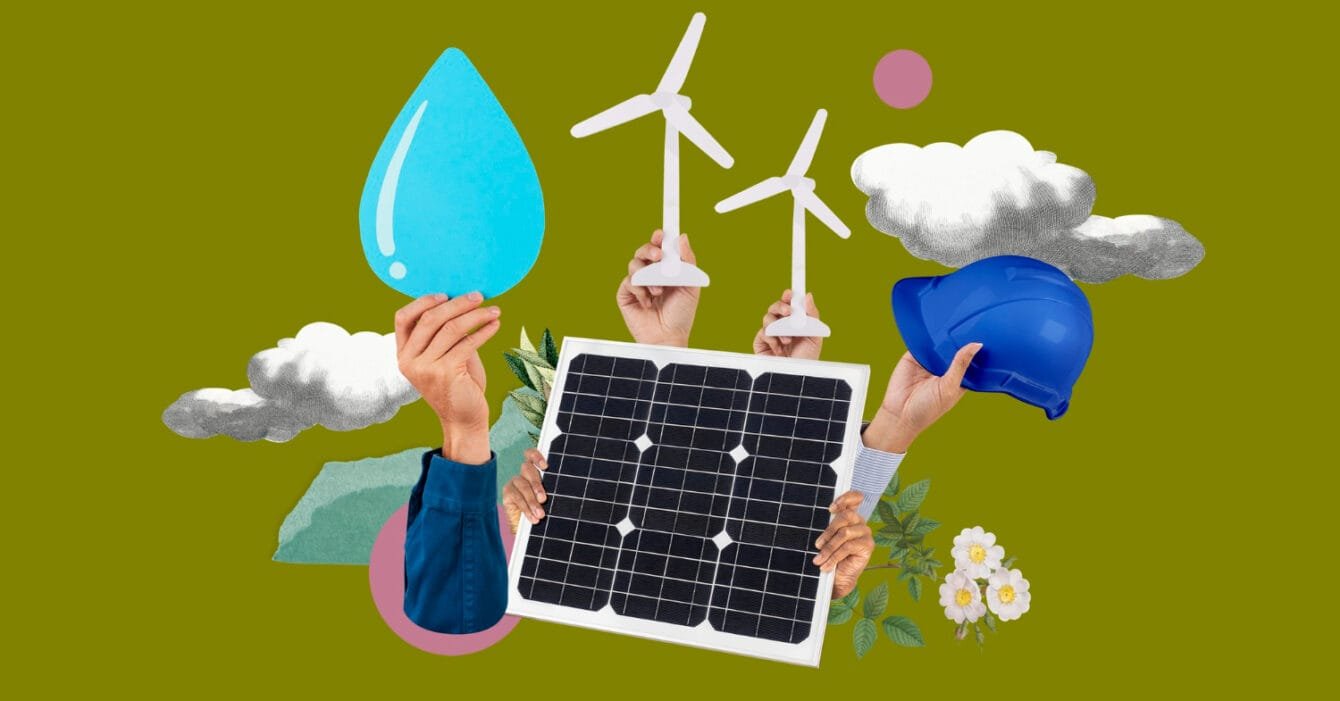Indonesia is at the forefront of integrating renewable energy into its construction projects, a move that promises a sustainable future and significant cost savings. With an ambitious target to achieve a 23% share of renewables in its electricity mix by 2025—up from 14% in 2021—the nation is leveraging its abundant natural resources and regulatory support to make substantial progress. Let’s discuss about the adoption of Indonesia Renewable Energy in Construction projects!
Aiming for Growth in Indonesia Renewable Energy in Construction
Indonesia’s Electricity Supply Business Plan (RUPTL) lays out a roadmap to achieve this target by expanding hydro, geothermal, and biofuel capacities. Solar energy stands out as a key focus. With an average solar irradiation of 4.80 kWh/m²/day, areas like Tuban, with even higher levels at 5.4 kWh/m²/day, illustrate the immense potential for solar energy in construction projects. These numbers highlight how solar can become a cost-effective and sustainable energy source.

The construction sector is uniquely positioned to benefit from this shift. Buildings powered by renewable energy reduce operational costs and align with sustainability goals. At the same time, it contributes to Indonesia’s ambitious climate commitments under the Paris Accord.
Read: Opportunities in Indonesia Urbanization and Construction Growth
Economic and Environmental Benefits
The economic potential of Indonesia Renewable Energy in Construction is immense. Projections indicate annual investments in renewable capacity could rise from USD 9.4 billion to USD 16.2 billion by 2030, stimulating growth and creating opportunities across industries.
One of the most notable projects is Southeast Asia’s largest floating solar PV plant, boasting a capacity of 192 MWp. This initiative alone is set to cut carbon emissions by 214,000 tonnes annually, demonstrating how innovative solutions can have a far-reaching impact on reducing greenhouse gases.
Employment is another key area of impact. The transition to renewable energy is projected to create numerous jobs in construction, installation, and maintenance of renewable facilities. This not only supports local economies but also provides sustainable career opportunities for workers.
Cost Management Through Renewables
Although the initial investment in renewable technologies can be high, the long-term cost savings are significant. Solar PV systems, for instance, have seen a more than 50% reduction in tariffs, making them increasingly competitive against fossil fuels. For construction projects, this translates to lower energy bills and enhanced profitability over time.
Companies like Semen Indonesia are leading the charge by integrating Indonesia Renewable Energy in Construction to align with corporate sustainability goals. Their target to reduce greenhouse gas emissions intensity by 23.9% by 2030 showcases how businesses can play a pivotal role in supporting national and global environmental objectives.
Sustainability at the Core of Indonesia Renewable Energy in Construction
By adopting renewable energy, the country’s construction sector is not only contributing to national sustainability goals but also playing a critical role in global climate change efforts. Indonesia Renewable Energy in Construction and renewable-powered buildings are energy-efficient, environmentally friendly, and represent the future of sustainable construction.
Read More: The Big Push for Sustainable Infrastructure Projects Indonesia
The Path Forward
As Indonesia advances toward its 2025 renewable energy target, the integration of renewables into construction projects stands as a beacon of progress. From solar energy to large-scale investments, these initiatives drive both sustainability and cost efficiency. By supporting Indonesia Renewable Energy in Construction transition, Indonesia is setting an example for other nations to follow.

